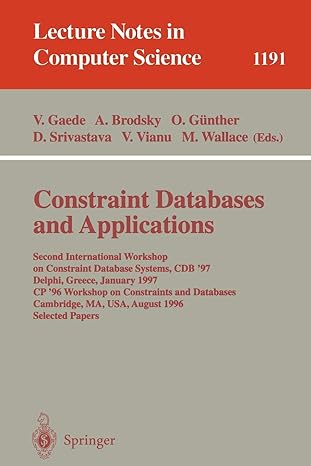Question
To implement a multi-layer feedforward back-propagation algorithm (we can just call it ANN) that can Teach a Neural Network to Read Handwriting. There are two
To implement a multi-layer feedforward back-propagation algorithm (we can just call it ANN) that can Teach a Neural Network to Read Handwriting. There are two different neural networks in this assignment:
1) Implement the ANN (NOT perceptron) to recognize 4 blocks image (such as one image shown below) to make a decision if an image is BRIGHT or DARK. Remember that we have 16 samples for the input.
2) Implement the ANN to read the simple hand-writing.
Neural networks and deep learning are two success stories in modern artificial intelligence. They've led to major advances in image recognition, automatic text generation, and even in self-driving cars. To get involved with this exciting field, you should start with a manageable dataset. The MNIST Handwritten Digit Classification Challenge is the classic entry point. Image data is generally harder to work with than "flat" relational data. The MNIST data is beginner-friendly and is small enough to fit on one computer. Handwriting recognition will challenge you, but it doesn't need high computational power. To start, we recommend with the first chapter in the tutorial below. It will teach you how to build a neural network from scratch that solves the MNIST challenge with high accuracy.
Tutorial ?
Neural Networks and Deep Learning (Online Book) - Chapter 1 walks through how to write a neural network from scratch in Python to classify digits from MNIST. The author also gives a very good explanation of the intuition behind neural networks.
Data Sources ?
MNIST - MNIST is a modified subset of two datasets collected by the U.S. National Institute of Standards and Technology. It contains 70,000 labeled images of handwritten digits.
You may write your code in a contemporary language of your choice; typical languages would include C/C++, Java, Python. A GUI interface is preferred. Preferably Java.

Image above
To implement a multi-layer feedforward back-propagation algorithm (we can just call it ANN) that can Teach a Neural Network to Read Handwriting". There are two different neural networks in this assignment: 1) Implement the ANN (NOT perceptron) to recognize 4 blocks image (such as one image shown below) to make a decision if an image is BRIGHT or DARK. Remember that we have 16 samples for the input. (Mandatory-counted 40% of Test-3. Please work on this assignment by yourself) 2) Implement the ANN to read the simple hand-writing. (Optional- 3-Bonus for the final grade) Neural networks and deep learning are two success stories in modern artificial intelligence. They've led to major advances in image recognition, automatic text generation, and even in self-driving cars. To get involved with this exciting field, you should start with a manageable dataset. The MNIST Handwritten Digit Classification Challenge is the classic entry point. Image data is generally harder to work with than "flat" relational data. The MNIST data is beginner-friendly and is small enough to fit on one computer. Handwriting recognition will challenge you, but it doesn't need high computational power. To start, we recommend with the first chapter in the tutorial below. It will teach you how to build a neural network from scratch that solves the MNIST challenge with high accuracy Tutorial Neural Networks and Deep Learning (Online Book) - Chapter 1 walks through how to write a neural network from scratch in Python to classify digits from MNIST. The author also gives a very good explanation of the intuition behind neural networks. Data Sources MNIST - MNIST is a modified subset of two datasets collected by the U.S. National Institute of Standards and Technology. It contains 70,000 labeled images of handwritten digits. To implement a multi-layer feedforward back-propagation algorithm (we can just call it ANN) that can Teach a Neural Network to Read Handwriting". There are two different neural networks in this assignment: 1) Implement the ANN (NOT perceptron) to recognize 4 blocks image (such as one image shown below) to make a decision if an image is BRIGHT or DARK. Remember that we have 16 samples for the input. (Mandatory-counted 40% of Test-3. Please work on this assignment by yourself) 2) Implement the ANN to read the simple hand-writing. (Optional- 3-Bonus for the final grade) Neural networks and deep learning are two success stories in modern artificial intelligence. They've led to major advances in image recognition, automatic text generation, and even in self-driving cars. To get involved with this exciting field, you should start with a manageable dataset. The MNIST Handwritten Digit Classification Challenge is the classic entry point. Image data is generally harder to work with than "flat" relational data. The MNIST data is beginner-friendly and is small enough to fit on one computer. Handwriting recognition will challenge you, but it doesn't need high computational power. To start, we recommend with the first chapter in the tutorial below. It will teach you how to build a neural network from scratch that solves the MNIST challenge with high accuracy Tutorial Neural Networks and Deep Learning (Online Book) - Chapter 1 walks through how to write a neural network from scratch in Python to classify digits from MNIST. The author also gives a very good explanation of the intuition behind neural networks. Data Sources MNIST - MNIST is a modified subset of two datasets collected by the U.S. National Institute of Standards and Technology. It contains 70,000 labeled images of handwritten digitsStep by Step Solution
There are 3 Steps involved in it
Step: 1

Get Instant Access to Expert-Tailored Solutions
See step-by-step solutions with expert insights and AI powered tools for academic success
Step: 2

Step: 3

Ace Your Homework with AI
Get the answers you need in no time with our AI-driven, step-by-step assistance
Get Started


